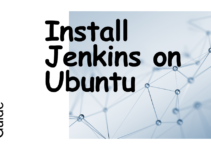In this article, we will discuss some of the Jenkins Best Practices for Efficient and Secure CI/CD Workflows. Jenkins is a powerful automation server that is widely used for continuous integration and continuous delivery (CI/CD) in software development. It helps developers automate various tasks in their workflow, including building, testing, and deploying code. However, with great power comes great responsibility, and using Jenkins requires adherence to some best practices to ensure its smooth and effective operation.
Top 20 Jenkins Best Practices
1. Keep Jenkins up-to-date
Jenkins is continuously being improved with new features and security patches. To take advantage of these enhancements and guarantee that your instance stays safe, you should constantly keep Jenkins up to date.
2. Use Jenkins in a Docker container
Putting Jenkins in a Docker container allows you to quickly manage your Jenkins instance while keeping it separated from the host system. This approach helps avoid conflicts with other software on the host machine and makes it easier to replicate the Jenkins environment.
3. Use plugins judiciously
Jenkins has a wide range of plugins that can add functionality to your instance. However, using too many plugins can slow down your Jenkins instance and cause compatibility issues. As a result, it is critical to utilize plugins wisely and only install the ones you require.
4. Use agent nodes for parallelization
Jenkins supports parallelization through the use of agent nodes. By using agent nodes, you can run multiple builds simultaneously, which can significantly reduce build times. This method is extremely beneficial for large projects with a high number of tests.
5. Use a version control system
Version control systems (VCS) like Git or SVN are essential for managing code changes in a collaborative environment. As changes are made to the codebase, you may automate the build, test, and deployment procedures by connecting Jenkins with a VCS.
6. Use a distributed architecture for scalability
You can set up numerous instances of Jenkins that can communicate with one another since Jenkins is meant to be distributed. This approach allows you to scale Jenkins horizontally, which means adding more instances to handle an increasing workload.
7. Use secure credentials management
Jenkins supports various credential types, such as SSH keys, usernames and passwords, and API tokens. To keep your credentials safe, follow best practices for credential management, such as keeping them in an encrypted format and restricting access to them.
8. Monitor Jenkins logs and performance
Jenkins logs provide valuable insights into the health and performance of your instance. Monitoring these logs regularly can help you identify issues before they become critical. You should also check the performance of your Jenkins instance to ensure that it is working properly and is not experiencing performance issues.
9. Use declarative pipeline syntax
Declarative pipeline syntax is a relatively new feature in Jenkins that provides a more streamlined and easy-to-read syntax for defining your pipeline. This approach helps make your pipeline code more maintainable, and it also provides better support for pipeline visualization and error reporting.
10. Use job templates
Job templates are preconfigured jobs that can be used as a starting point for new jobs. By using job templates, you can ensure that your jobs follow a consistent structure and configuration. This approach helps reduce errors and makes it easier to manage your jobs at scale.
11. Use versioned plugins
When using plugins in Jenkins, it is important to use versioned plugins to ensure that your instance remains stable and consistent. Versioned plugins provide a reliable way to manage plugin dependencies and avoid compatibility issues.
12. Use agent labels for better job distribution
When using agent nodes, it is important to use agent labels to better distribute jobs to nodes with the appropriate resources. By using agent labels, you can ensure that jobs are run on nodes with the right capabilities, which can improve performance and reduce build times.
13. Use Docker for build isolation
Docker provides a lightweight and efficient way to isolate builds from the host machine. You can guarantee that your builds execute in a consistent and reproducible environment by utilizing Docker containers, which helps eliminate conflicts with other applications on the host computer.
14. Use centralized logging
Centralized logging is essential for monitoring and troubleshooting Jenkins instances at scale. By using a centralized logging solution, you can easily aggregate and analyze logs from multiple Jenkins instances, which helps identify issues more quickly and efficiently.
15. Use a backup and recovery plan
Like any critical system, Jenkins should have a backup and recovery plan in place. By regularly backing up your Jenkins instance, you can ensure that your data is safe in case of a disastrous event. It is also critical to routinely test your recovery strategy to ensure that it functions as planned.
16. Use parameterized builds
Parameterized builds allow you to define custom parameters for your builds. This approach can help you automate and customize your build processes, such as specifying different build targets or configurations. It also makes it easier to reuse your builds for different purposes.
17. Use test automation
Automated testing is a key component of any CI/CD workflow. You can verify that your code fulfills quality requirements and that any bugs are discovered early in the development cycle by automating your tests. Jenkins supports a wide range of testing frameworks, and there are many plugins available to integrate them into your pipeline.
18. Use pipeline visualizations
Jenkins provides a powerful pipeline visualization tool that allows you to see the progress of your builds at a glance. Pipeline visualizations allow you to rapidly discover bottlenecks and faults in your pipeline and make necessary improvements.
19. Use role-based access control
Role-based access control (RBAC) allows you to control access to your Jenkins instance based on user roles and permissions. RBAC helps ensure that only authorized users can make changes to your instance, which helps prevent security breaches and accidental changes.
20. Use automated security scanning
Jenkins supports a wide range of security plugins that can be used to automate security scanning and testing. By utilizing these plugins, you can verify that your code satisfies security requirements and that any vulnerabilities are discovered early in the development cycle.
In conclusion, Jenkins is a powerful tool that can greatly improve your CI/CD workflows. You may optimize your Jenkins instance for security, stability, and scalability, as well as guarantee that your development processes are optimized for efficiency and quality, by applying the 20 best practices mentioned in this article. You may enhance your software development processes and provide high-quality software to your clients more rapidly and reliably by implementing these best practices. So, follow these best practices to unleash the full potential of Jenkins for your software development workflows.










